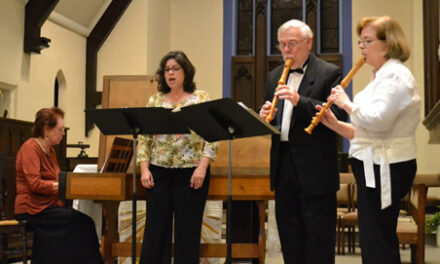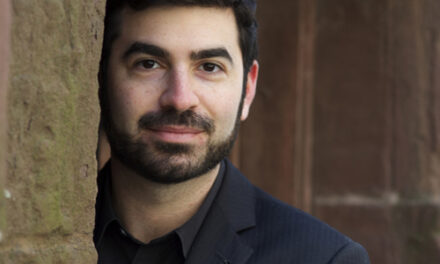The University of North Carolina School of the Arts is scheduled to present the Chamber Music Society of Lincoln Center twice this academic year – this concert and again on February 6. I was delighted to attend this first concert in Watson Hall and highly recommend everyone consider a trek to Winston-Salem in February for the second.
As you might expect, the musicians were of the highest standard. The two youngest were double bassist Xavier Foley and violinist Paul Huang. Foley has won three important prizes, soloed with three orchestras, and started an impressive career only two years after graduating from Curtis Institute of Music. He has performed with the Sphinx Virtuosi, an elite chamber group of black and Latino musicians who concertize in North Carolina regularly. Huang also has won important prizes and is a recent graduate of Juilliard, with both Bachelor’s and Master’s degrees. His 1742 Guarneri del Gesù is on loan from the Stradivari Society of Chicago. Nice work if you can get it.
A touch older, but not by much, is pianist Orion Weiss. A 2004 graduate of Juilliard, he’s had a chance to rack up an impressive list of performances and recordings with quite a few orchestras across the country.
Violist Paul Neubaur was appointed principal violist of the New York Philharmonic at age 21 and has appeared with over 100 other orchestras. He’s on the faculty of Juilliard and Mannes College.
Cellist Keith Robinson (brother of cellist Sharon Robinson, who is a graduate of the UNCSA, and bassist Hal Robinson) has had the longest career of the musicians performing on this occasion. He’s a founding member of the Miami String Quartet and has been a prominent chamber musician and soloist with orchestras for decades.
The program was heavy on the standard repertoire, with one work not commonly heard to spice things up. The first was Variations on Mozart’s “Bei Männern, welche Liebe fühlen” from Die Zauberflöte, for cello and piano, by Beethoven, written in 1801. Cellist Robinson and pianist Weiss each had an extraordinary ability to vary the dynamics from pppp to fff in the space of a few notes in a phrase. (There was none of that heroic mezzo forte stuff with this duo.) The result was a captivating and unusually expressive rendition.
Next up was Franz Schubert’s Sonata in A minor for Viola and Piano, D.821 (“Arpeggione”), from 1824. Concertgoers will be familiar with the story of this work, originally written for an obscure and quickly obsolete instrument but then arranged for either cello or viola and piano. The lyrical quality of the melodies is the equal of anything in Schubert’s music or for that matter anyone else’s. Violist Neubauer did the honors with Weiss at the piano. The balance was well calibrated, helped by the quality of the hall’s acoustics. The viola’s tone was smooth and rich in the relatively low tessitura employed by this piece.
For the bonbon of the evening, we had the Gran duo concertante for violin, double bass, and piano by Giovanni Bottesini, written in 1880. Bottesini, dubbed “the Paganini of the double bass,” originally wrote this for violin, bass, and orchestra. The piano part is a reduction, which makes it a bit of a clunky affair compared to the original. That said, pianist Weiss was game for the effort. The point of this piece is not to be deeply inspirational or make wonderful music: it’s to show off extreme virtuosity on the violin and most especially on the bass, and it delivers in spades. Violinist Huang was all over the fingerboard with a brilliant tone. The star of this performance, though, was bassist Foley, who rolled up his left sleeve to give extra mojo on the fingerboard – only bare biceps and forearms would suffice! The pyrotechnics were impressive enough to merit a standing ovation and hoots from the crowd – most exceptional given it was not the end of the concert.
After intermission came the oft-performed and much-loved Quintet in A for piano, violin, viola, cello, and double bass, Op. 114 (“Trout”), by Schubert, from 1819. All the musicians were in on the fun. You just can’t help but smile with this piece, one of the cornerstones of chamber music literature. Perhaps it was a touch too soft in the cello and viola for the balance, or maybe it was some wax in my hearing aids. Otherwise, you couldn’t ask for a finer performance, which is important when the audience has certainly heard quite a few others.
Overall, this was a superb concert by some of the best in the business. It’s actually a touch intimidating to witness this kind of virtuosity.
Just a few student-age audience members showed up, which is the norm for concerts on university campuses; one would hope for more at a specifically arts institution.
North Carolina can be proud to have a School of the Arts of such stature, and that we can host concerts of world-class quality.
For forthcoming concerts at this grand educational institution, see our calendar












